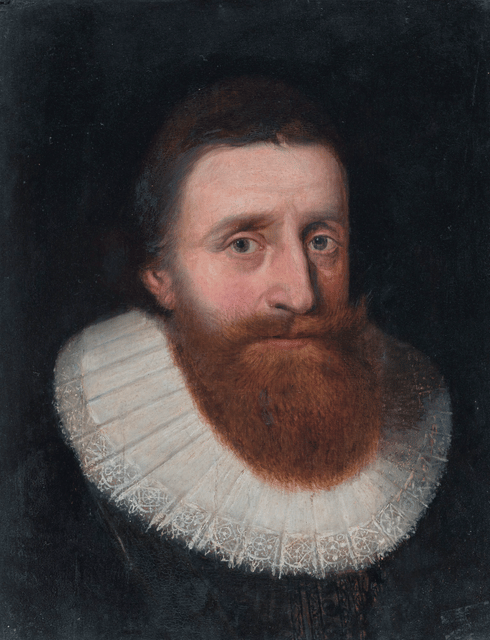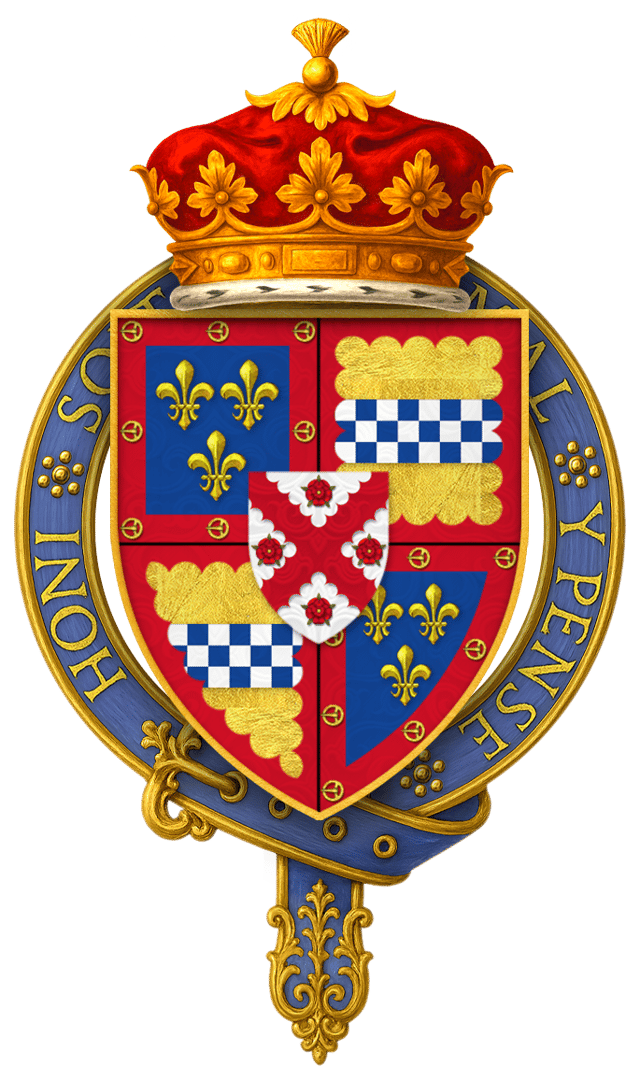Ludovic Stewart, 2nd Duke of Lennox

Ludovic Stewart, 2nd Duke of Lennox

His Grace The Duke of Lennox | |
|---|---|
| Born | 29 September 1574 |
| Died | 16 February 1624 (aged 49) |
| Resting place | Westminster Abbey, London |
| Title | 2nd Duke of Lennox 1st Duke of Richmond |
| Spouse(s) | Sophia Ruthven Jean Campbell Frances Howard |
| Parent(s) | Esmé Stewart, 1st Duke of Lennox and Catherine de Balsac |

John Smith's The Generall Historie of Virginia, New-England, and the Summer Isles recounts early English attempts to settle New England.
Ludovic Stewart, 2nd Duke of Lennox and 1st Duke of Richmond (29 September 1574 – 16 February 1624), was a Scottish nobleman and politician. He was the son of Esmé Stewart, 1st Duke of Lennox, and his wife, Catherine de Balsac. Ludovic was involved in the Plantation of Ulster in Ireland and the colonization of Maine in New England. Richmond's Island and Cape Richmond, as well as Richmond, Maine (formerly Fort Richmond), are named for him.
His Grace The Duke of Lennox | |
|---|---|
| Born | 29 September 1574 |
| Died | 16 February 1624 (aged 49) |
| Resting place | Westminster Abbey, London |
| Title | 2nd Duke of Lennox 1st Duke of Richmond |
| Spouse(s) | Sophia Ruthven Jean Campbell Frances Howard |
| Parent(s) | Esmé Stewart, 1st Duke of Lennox and Catherine de Balsac |
Life
On 14 November 1583, after the death of Esmé Stewart, Ludovic returned from France and was taken to meet James VI at Kinneil House.[1] In December, James VI issued instructions for the education of Ludovic. The young Duke was to remain in the king's household under the care of Mr. Gilbert Moncreiff.
On 13 February 1593 Lennox decided to play golf with Sir James Sandilands at Leith. On their way they met John Graham, a Lord of Session, who thought Sandilands was attacking him. The two groups of attendants fired on each other pistols, and John Graham and Sir Alexander Stewart, a companion of the duke, were killed.[2]
In 1591 he was appointed to the post of Lord High Admiral of Scotland following the disgrace of Francis Stewart, Earl of Bothwell. In 1594, the Duke and 15 friends subscribed to a frivolous legal document swearing to abstain from wearing gold and silver trimmings for a year, and defaulters were to pay for a banquet for all.[3] At the tournament at Prince Henry's baptism in August 1594 he rode in a Turkish costume.
Following his accession to the English throne in 1603, King James (now James I of England) created him Lord Settrington and earl of Richmond (1613), and earl of Newcastle and duke of Richmond (1623), all these titles being in the Peerage of England.[4] In 1623 he was granted the additional titles of Earl of Newcastle and Duke of Richmond.
Lennox was a conduit for patronage and court appointments, and those hoping to place their allies at court would solicit his favour. However, Lennox claimed that placing more Scottish people in the king's household had become difficult. He wrote to Sir William Livingstone of Kilsyth who had asked for a place for a Napier of the Merchiston family;
"although the King has this long time promised Merchiston ever the next vacant place, yet many has been placed over him and in this has found great impediments; for believe that a stranger shall find great difficulty to obtain any such place so long as there is any English man that does aim at it; for it is thought by them all that there is already too many Scots here in such places."[5]
On 9 February 1608 he performed in the masque The Hue and Cry After Cupid at Whitehall Palace as a sign of the zodiac, to celebrate the wedding of John Ramsay, Viscount Haddington to Elizabeth Radclyffe.[6]
Lennox acquired the licence to mint copper farthings. As part of the Plantation of Ulster, Lennox was granted lands at Portlough in the Barony of Raphoe in County Donegal in 1608. The Pynnar Survey of 1618 records Lennox as the chief undertaker for 2,000 acres in the Portlough area and represented locally by his agent Sir Aulant Aula. Newtownstewart in County Tyrone, now in Northern Ireland, may have been named after him. In the Muster Rolls of 1631 the 4th Duke of Lennox is described as being an undertaker of 4,000 acres. Mongavlin Castle was built by his son Sir John Stewart, who was also governor of Dumbarton Castle.
Ludovic was involved in the colonization of Maine in New England. Richmond Island and Cape Richmond, as well as Richmond, Maine (formerly Fort Richmond), are named after him.
He died in 1624 without legitimate issue,[4] aged 49, and was interred in Westminster Abbey, London.
Family

Arms of Sir Ludovic Stewart, Duke of Lennox and Richmond, KG

Frances Howard, Lennox's third wife
James VI of Scotland had discussed the possibility of him marrying Arbella Stuart with Thomas Fowler.[8] Ludovic married, firstly, Sophia Ruthven, daughter of William Ruthven, 1st Earl of Gowrie, before June 1590.
He married, secondly, Jean Campbell, great-granddaughter of James IV of Scotland, around August 1598. Lennox wrote in April 1605 to William Livingstone of Kilsyth, who managed some of his Scottish estates, that he wished to "rid me of her" and "be quit of her." In December 1610, after this marriage had ended and Jean had died, her brother Hugh Campbell of Loudon complained that the Duke had taken her fine things to England, leaving her "drowned in great debt" with only an old silver basin, three little cups, and their children.[9]
He married, thirdly, Frances Howard, daughter of Thomas Howard, 1st Viscount Howard of Bindon, on 16 June 1621.
His illegitimate son, Sir John Stewart of Methven, governor of Dumbarton Castle and builder of Mongavlin Castle was married to Margaret Hamilton, daughter of Sir Claud Hamilton of Shawfield. This Claud was a son of Claud Hamilton, 1st Lord Paisley and a younger brother of James Hamilton, 1st Earl of Abercorn.[10] Claud Hamilton also had a plantation in Ireland.
See also
Earl of Newcastle
Plymouth Council for New England